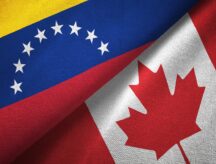Report: High immigration targets likely to benefit western provinces
A recent economic report by Desjardins shows that Canada’s increased immigration targets are likely to have a positive impact on provincial economies, particularly in the western provinces.
Since 2015, immigrants have consistently outpaced Canadian-born workers in net new positions, accounting for 70% of employment gains. In fact, by 2019, employment rates for new immigrants were higher than Canadian-born workers in nearly every province.
These gains were not strongly impacted by the COVID-19 pandemic. During this time, there was a surge of employment among new immigrants that helped close the gap between the unemployment rate of new immigrants and Canadian-born workers, which stood at 5.3% vs 5%, in 2022.
Discover if You Are Eligible for Canadian Immigration
Considering the economic slowdown expected over the coming year, the report says there are potentially wide-ranging economic outcomes for newcomers in different parts of Canada, both during the coming downturn and in the eventual recovery. The Bank of Canada expects national GDP growth of just 1% over 2023, as opposed to the 3.6% seen throughout 2022.
Which provinces are benefitting from immigration?
The report balanced economic outcomes for individual provinces based on factors relative to the Immigration Levels Plan. For example, it made projections on the province's economies with variations on the high targets of the immigration for the next three years, the average percentage of newcomers who settle in each province, and how immigrants integrated into the economy over various times periods including pre-pandemic and present-day.
The report shows that, if current immigration trends remain consistent, the biggest immigration-related economic gain from higher national immigration targets will occur in provinces will occur in British Columbia, the Prairie Provinces, and Prince Edward Island (PEI). PEI admits the highest number of immigrants per capita of any Canadian province.
Further, if Alberta, Manitoba, and Saskatchewan can attract a higher number of newcomers, these provinces would experience a significant boost of between 0.3 to 0.6 percentage points to their GDP. They can do this by creating stronger economic conditions and better affordability to attract a higher share of newcomers in the next few years.
A province with more jobs and a higher rate of employment is a primary factor in attracting and retaining immigrants. That being said, an increased rate of employment on its own does not have a significant effect on a province’s GDP.
Immigration will only strengthen the provincial economy if newcomers settle into a community long-term and contribute to the local economy by participating in day-to-day spending. There is higher potential economic contribution due to immigration when a province’s immigrant intake makes up a large enough share of the existing population and they can easily integrate into the labour market.
Recent immigrants doing well because of federal policy
Economists credit the strong labour market performance of recent immigrants to federal policy. During the pandemic, the federal government increased the number of permanent residents in Canada by inviting more temporary foreign workers and international students. This means that many new permanent residents were already living in Canada and had Canadian work experience, making it much easier for them to integrate and enter the labour force.
The report also says provinces with larger populations (measured in terms of oil-consumption) began 2020 with more economic momentum and tighter labour markets, which meant more labour shortages during the pandemic and appears to have prompted many firms to hire recent newcomers.
Take away
The report concludes that immigration targets alone, while potentially helpful to the Canadian economy, are not enough to ensure Canada sees significant economic gains. It recommends that Canada continues to emphasize inviting immigrants with in-demand skill sets.
There are over 100 economic immigration pathways for newcomers to Canada. Many of them are within the Provincial Nominee Program (PNP). Under the PNP, each province and territory (except Quebec and Nunavut) can select candidates with skills that will benefit the local economy. These programs often issue invitations to candidates who can help combat local labour shortages such as those in tech, skilled trades, or healthcare.
There are also a variety of immigration programs that target broader regions in Canada, such as the Atlantic Immigration Program and the Rural and Northern Immigration Pilot Program. Under these programs, candidates are offered significant support from their employers such as settlement services and access to healthcare.
Discover if You Are Eligible for Canadian Immigration
© Want to advertise on CIC News? Click here to contact us.
- Do you need Canadian immigration assistance? Contact the Contact Cohen Immigration Law firm by completing our form
- Send us your feedback or your non-legal assistance questions by emailing us at media@canadavisa.com







